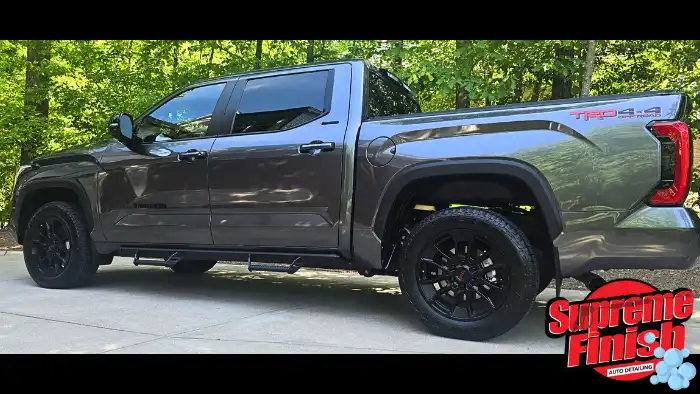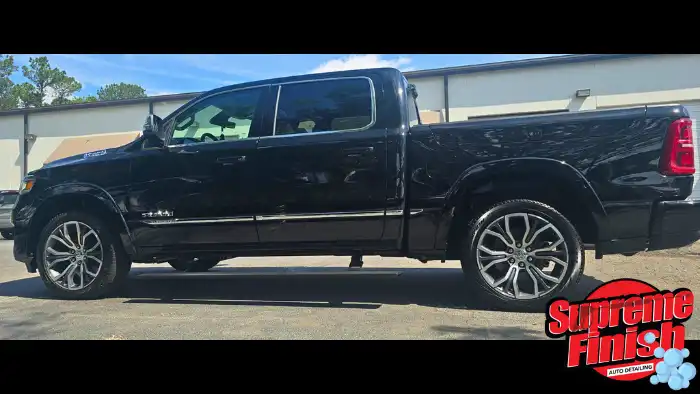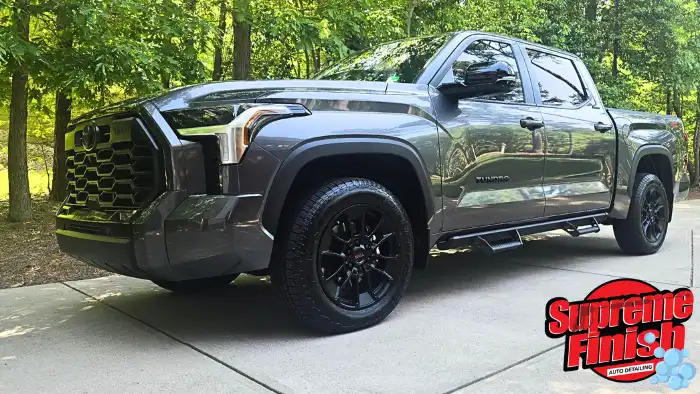Wheel-Well Detailing for Lifted Trucks
Unfortunately, a quick rinse at the local drive-through wash barely touches the problem. The arch of a lifted wheel-well can be 6–10 inches taller than the angles automated sprayers are designed to hit, so dirt cakes on, rotors stay gritty, and rust begins where you can’t see it. That grime also traps moisture—accelerating corrosion on coil-over seats, U-bolt threads, and even factory welds.
A wheel-well detail flushes out that hidden mess, restores a clean gloss to liners and shocks, and keeps your lift kit performing (and looking) its best. If you’d rather hand the job to experts, you can always get a deep wheel-well clean with Supreme Finish Auto Detailing.
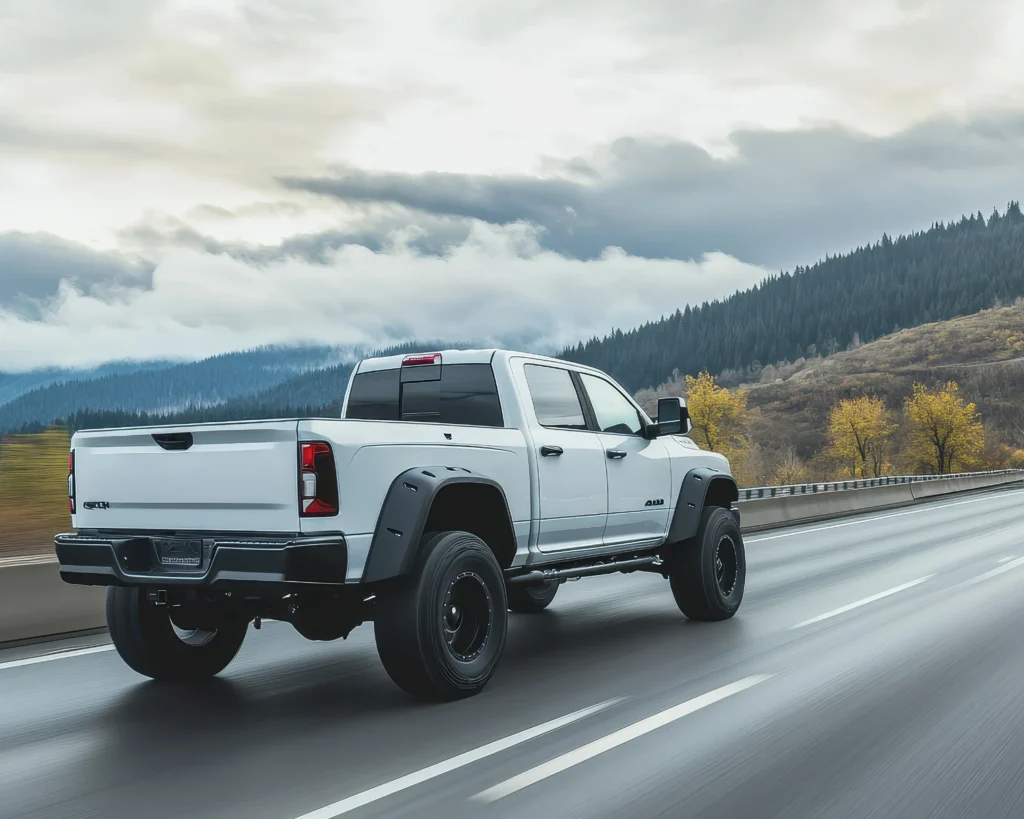
Why Wheel-Well Care Matters on Lifted Trucks
Rust is basically iron + oxygen + water—which means any time bare steel comes in contact with moisture and air, corrosion can start. In North Carolina, that simple recipe gets turbo-charged by a handful of local factors:
Bigger splash zone
Higher ride height lets mud fling deeper into liners and upper control arms.
Heat + grit = brake wear
Packed clay around calipers turns into an abrasive paste under braking temperatures.
Hidden rust starter
Trapped magnesium-chloride brine stays damp and corrodes spring perches and frame rails.
Step-by-Step Deep-Clean Method
- Pre-rinse with a 40° fan tip at 2,000–3,000 psi
Blow loose dirt out of shocks, leaf springs, and inner liners before chemicals touch paint. - Apply a high-foaming, alkaline degreaser
Choose a non-acid formula safe for painted metals and allow double the dwell time (4–5 minutes) for 6-inch+ lifts—the extra height keeps product from sliding off too quickly. - Agitate with a long-reach wheel-well brush
Nylon bristles reach past tires into liner ridges and brake-hose brackets; work top to bottom. - Second high-pressure rinse
Rotate the steering knuckle to full lock each direction to expose hidden angles behind knuckles and upper control arms. Spot treat stubborn tar or red-clay stains
Use a citrus-based solvent on asphalt specks and a dedicated iron remover on orange clay spots.- Dry with compressed air
Water sits in lift-kit brackets; a 125 psi air blast prevents drips that could redeposit grime.
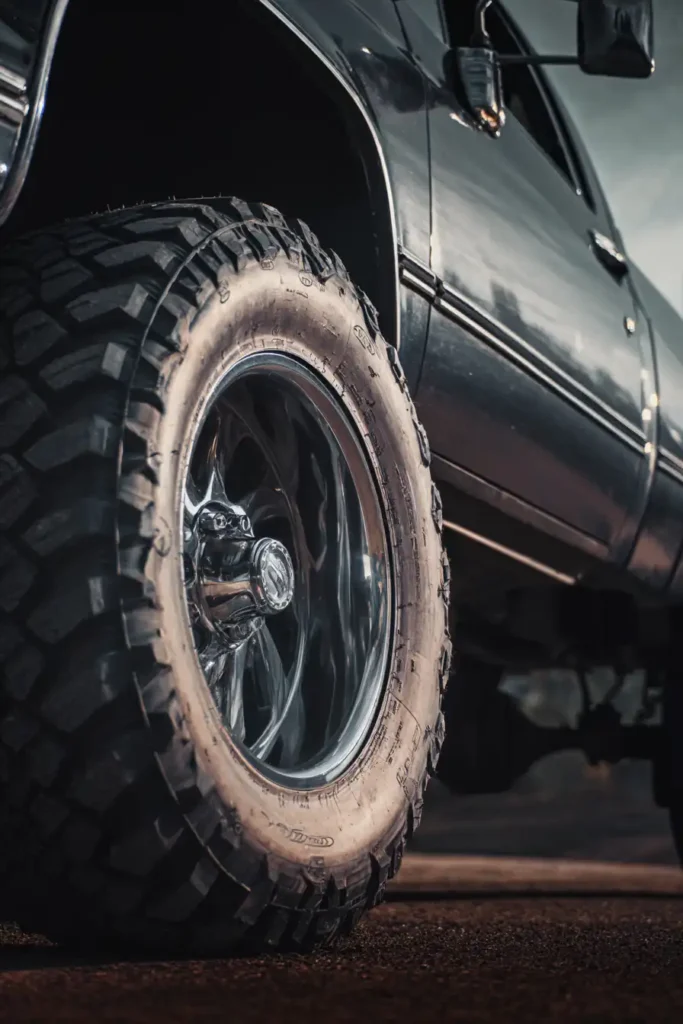
Maintenance Schedule
Rust is basically iron + oxygen + water—which means any time bare steel comes in contact with moisture and air, corrosion can start. In North Carolina, that recipe gets turbo-charged by a handful of local factors:
Daily highway commuter or driver
Have a professional wheel-well detail every three months. This cadence prevents the buildup of film and dust in tight seams.
Weekend off-roader / construction sites
Removing red clay and gravel residue right away stops it from hardening into an crust that eats at paint and suspension.
Winter brine (salt) exposure
Rapid removal of magnesium-chloride residue keeps the salt from re-hydrating and launching a fresh round of corrosion.
Schedule Your Appointment
Ready for a professional deep clean? Call (919) 794-7261 or submit our online form.
📍 Supreme Finish Auto Detailing
3125 Gresham Lake Road, Raleigh, NC 27615
📞 Call us at: (919) 794-7261
🔗 Get a quote today: Click Here
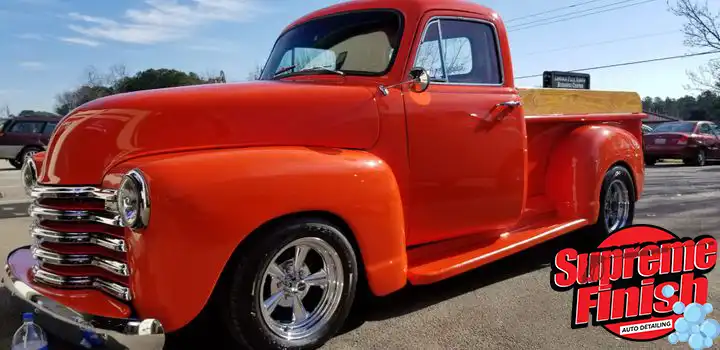
FAQs on Wheel-Well Detailing for Lifted Trucks
A garden hose won’t generate enough pressure or reach the upper liner ledges on a lifted truck. High pressure (2,000+ psi) and targeted chemical dwell are key to removing packed clay and brine residue.
Modern water-based dressings cure dry-to-the-touch, so they repel dust rather than attracting it. They also provide UV protection that keeps plastic liners from fading gray.
Use pH-neutral cleaners and avoid petroleum-based solvents; they can swell polyurethane bushings.

